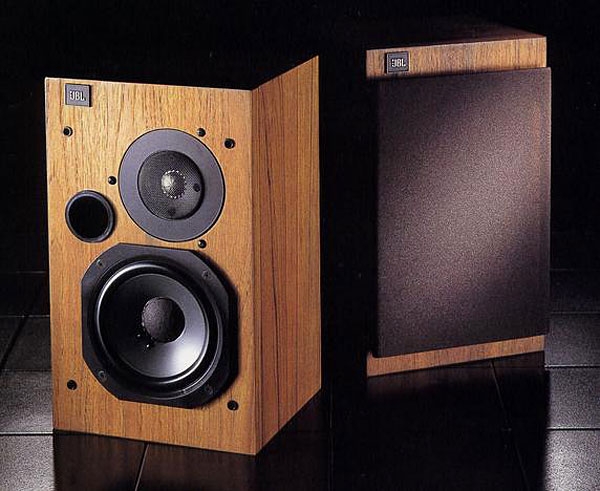| Columns Retired Columns & Blogs |
Excellent review- JA
how can I get a copy of your HFN/RR test disc?
You may send me a PM here- fantja@gmail.com
Thank You!

Set-Up
The JBL 18tis were used over an extended period of time for all my recreational listening; once I had become happy that I was getting the best sound, a more critical series of listening tests was performed using an identical selection of music to get an idea of the comparative strengths and weaknesses of each design. The tracks used were as follows: Chopin Waltz in C-sharp minor, HFN/RR test CD (my own recording, made with the Calrec Soundfield mike in crossed figure-eight mode); the drumkit recording on the HFN/RR test CD (again recorded with the Soundfield mike); Beethoven "Pathetique" sonata, Performance Recordings PR-5 (recorded with crossed figure-eight ribbon mikes); Stan Rogers' Northwest Passage (Fogarty's Cove Music FCM-004, a naturally recorded collection of Nova Scotian-style songs sung by a baritone, recommended to me by Mission's Armi Leonetti); Ray Noble's "The very thought of you" (Ken Kessler's favorite test track, the incomparable Ella Fitzgerald backed by a naturally miked big band, recorded in 1962 when engineers didn't know enough to spoil the music); and Stravinsky's Firebird suite, on Sheffield Lab CD-24 (pure Blumlein-miked orchestra, using Coles ribbon mikes). Particularly useful for judging accuracy of timbre on voice was the Freehold, New Jersey, recording of "Papa-oom-mow-mow" (Rhino RNLP 70827).
The two things these recordings have in common, apart from the fact that I know them all intimately, is that they all were recorded in such a way as to produce a tightly defined, tonally neutral soundstage, and that none have been "doctored." As I have pointed out before, how on Earth can a reviewer make valid value judgments if he doesn't know what to expect from the recordings he uses to make those judgments? Somehow he or she has to break the circle of not knowing what a recording sounds like apart from judging it using loudspeakers, the properties of which he or she doesn't know apart from judging them using the unknown recording.
Sound
I started out using the 18Tis mounted in free space on 16" stands, but quickly became aware that there was a suckout in the upper midrange, the sound being wiry and lacking body on violin. Changing to 23" stands filled in this depression, resulting in a tonal balance that was quite natural overall. The main failings were still a slightly wiry emphasis in the high treble which exaggerated the splash of cymbals, and a lack of definition in the upper bass which lent a woolliness to bass guitar. Low bass was absent, bass guitar and double-bass sounding a little small as a result, but the power of recorded drums came over very well. Timbre on both male and female voice was very good, though with a slight "eee" coloration, the former acquiring a slightly phlegmy edge and the latter a little too much throat tone. Recorded piano was evenly reproduced, with a clean HF, but perhaps a slightly too lively upper midrange.
The 18Ti didn't have quite the clarity of soundstaging featured by the Celestion SL6S that I also review in this issue, the central imaging being a little broad and there being less depth than I expect. Instruments with generous amounts of treble energy—hi-hat cymbal, for example—were projected forward a little, and my Chopin piano recording was unrealistically shallow. All in all, however, this is very good performance at the price, and, true to the JBL tradition, these speakers will play loud, despite their relatively low sensitivity.
Conclusion
The 18Ti is tonally the most neutral JBL I have heard, and offers a reasonable compromise between the need to play loud and to squeeze as much sensitivity and low-frequency extension as possible from such a small box. Personally, I would have liked a less generous, better-defined upper bass, perhaps from a closed-box alignment, but the 18Ti's balance was undoubtedly chosen to give the illusion of "good" bass to non-audiophile customers. An overall performance not up to the standards set by the better, more expensive speakers in this group, but excellent value at the price.

Excellent review- JA
how can I get a copy of your HFN/RR test disc?
You may send me a PM here- fantja@gmail.com
Thank You!

Hi, John! I am not an audiophile, but a casual music listener...I liked the Soundboks-2 but it is very expensive. Could you please recommend me a loudspeaker under $300 range?

Thanks for this review. these speakers have a sentimental value for me, but it's nice to see how they rate with recent sensibilities.